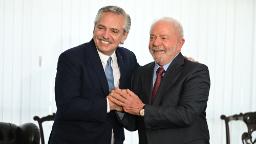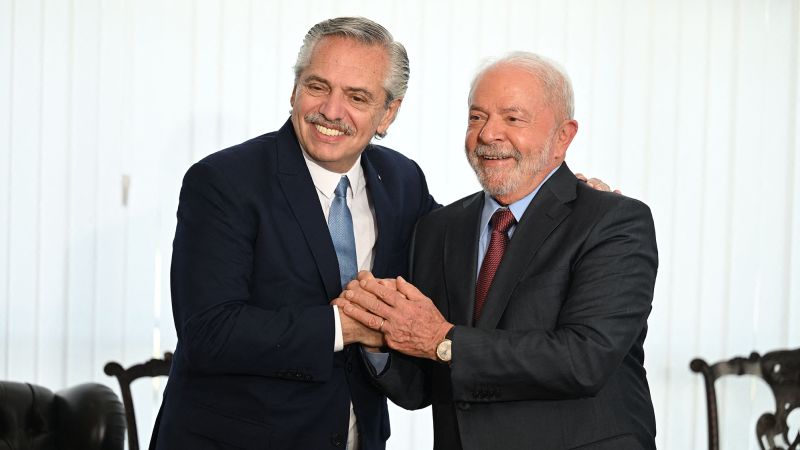
London
CNN
—
The two biggest economies in South America are starting talks to create a common currency. Analysts are skeptical.
Brazil’s President Luiz Inacio “Lula” da Silva and Argentina’s President Alberto Fernández wrote in a joint piece published in Argentinian paper Perfil Sunday that they wanted to foster greater integration between the two neighbors.
The pair said they had “decided to move forward with discussions about a common South American currency that could be used for financial and commercial flows, reducing operating costs and our external vulnerability.”
The announcement came as Lula visits Argentina for his first trip abroad since taking office at the start of the month. At a press conference in Buenos Aires, he said establishing a common currency for trade would reduce reliance on the US dollar, whose sharp ascent last year was painful for countries around the world.
“If it depended on me, we would have external commerce always in the same currency of the other countries so we wouldn’t have to depend on the dollar,” Lula said.
Brazil’s finance minister, Fernando Haddad, downplayed the scope of the idea in talks with reporters, according to Reuters. He stressed that Argentina’s shortfall of US dollars was weighing on trade between the two countries and that government leaders were exploring possible solutions, but that didn’t mean the Brazilian real was on its way out.
“Trade is really bad and the problem is precisely the foreign currency, right? So we are trying to find a solution, something in common that could make commerce grow,” Haddad said.
The two countries are both part of the Mercosur trade bloc, which also includes Paraguay and Uruguay. Talk of creating a common currency has periodically cropped up since its founding in 1991.
Win Thin, global head of market strategy at Brown Brothers Harriman, said conversations were reemerging now because the leftist Lula is more politically aligned with Fernández than his predecessor, Jair Bolsonaro.
Emerging markets have also been hit hard by the strong US dollar, drawing complaints about its dominance in the global financial system. The greenback rallied nearly 8% against a basket of major currencies in 2022, making imports of food and energy more expensive and raising the cost of servicing debt denominated in dollars.
Still, investors are doubtful efforts to create a common currency in the region will gain much traction.
“I really don’t think it’s going to go anywhere,” Thin said. “For Brazil and Argentina, it really does seem a bridge too far.”
Brazil — dealing with a sharp run-up in interest rates — faces with a steep slowdown in growth this year. The World Bank estimates its economy will expand by just 0.8% in 2023, down from 3% growth in 2022.
But Brazil’s economic position has been much sturdier than Argentina’s over the past two decades, Thin said.
“The credibility of the central banks and institutions in Brazil is much stronger,” he said.
Argentina, which defaulted on its sovereign debt for the ninth time in 2020, continues to be battered by crippling inflation. Consumer prices in the country rose 95% in the 12 months to December. Efforts to get the situation under control have forced the country to draw down its stash of foreign reserves and put a lid on business investment.
Hasnain Malik, head of equity research at Tellimer, said in a research note that the divergence in economic circumstances would make it extremely difficult for the two countries to get on the same page.
“Brazil and Argentina are a long way away from the convergence in economic policy and performance required to launch [a] monetary union,” he said.

